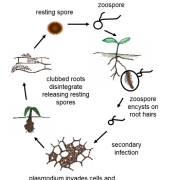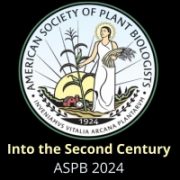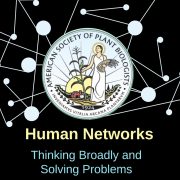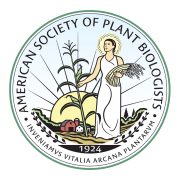What if Plant Scientists were as Diverse as the Plants we Study?
Guest post by Jennifer Nemhauser & Elizabeth Haswell
This spring, in collaboration with Joanna Friesner, we launched DiversifyPlantSci (1), an on-line directory of self-nominated plant scientists who share identity with groups that are currently minoritized in STEM fields. Membership now exceeds 250 people, and includes scientists who identify as belonging to racial or ethnic groups other than White European/American, those who identify as women, those who have disabilities, and those who identify as members of the LGBTQ community. We aim for a scientific community where every conference, every group of reviewers and editors, every special issue, every list of award nominees and recipients, every departmental seminar series, and every faculty recruitment effort reflects the true diversity of the global plant sciences community.
We write this piece as two plant biologists committed to increasing equity and inclusion in our institutions and organizations. Our efforts are informed by our roles within the science community: Professors of Biology at R1 institutions; editors of ASPB journals; elected members of NAASC; and representatives at the recent Plant Summit (2). One of us co-hosts a podcast (3) that tackles issues of scientific culture, and the other is the Chair of her department’s Graduate Student and Postdoctoral Scientist Committee. All of that said, we do not consider ourselves experts. We see writing this article as an opportunity to reflect on what we have learned, share some hard-won insights, and (hopefully) inspire the entire plant science community to enter into a deeply important conversation that results in action.
Like any other STEM discipline, the plant sciences have a number of deeply-entrenched problems with systemic bias. Racism remains pervasive. Harassment based on sex or gender expression happens at every career stage, in the laboratory, at meetings, and during fieldwork. A lack of exposure to the unwritten rules guiding academic interactions adds another barrier to success for first-generation scientists and those in training outside their home country. Perhaps it is no wonder that a substantial number of our trainees struggle with mental health issues, especially depression and anxiety.
What to do? As a starting point, we must examine the rationales we give for our efforts at improving diversity and inclusion. One commonly heard justification is that diverse teams are more effective and innovative (and this is strongly supported by data). Yet, do we really want to convey to our trainees that their productivity and efficiency is the ultimate measure of their worth? Instead, we should improve diversity and inclusion in plant science simply because it is the right thing to do. Everyone deserves equal access to the privilege and joy of doing plant science, and to be a respected and valued member of our community.
Next, we must recognize that effective solutions to diversity, inclusion, and equity problems demand change from powerful individuals and institutions—not from the vulnerable people they are meant to serve. Ceding power is difficult, but institutions must intentionally promote the good of the community over the propagation of existing structures. At least in name, recruitment and retention of a diverse workforce are embraced by most institutions where plant science is done, and a solid foundation of evidence-based practices can guide us in actualizing these goals. Some institutional and process solutions will have wide-ranging benefits across minoritized groups. For example, there are excellent resources on how we should restructure our educational programs (4). At the professional society level, plant biologists must do better at establishing community norms and expectations that include all facets of professional life (5).
Another necessary shift is to properly value the contributions of our colleagues. Prof. Beronda Montgomery (see elsewhere in this issue), Prof. Gina Baucom and others doing similar work in this space (6) should be compensated for their work. This compensation could take the form of formal titles that recognize their contributions to societies and organizations in a way that may influence promotion or funding decisions; monetary compensation for their advocacy work wherever possible; and funding awards to support their science in recognition of the opportunity cost accrued when doing community service and advocacy. The artificial separation between doing research and improving the environment in which research is done should be eliminated. We envision a future where talks by our colleagues are used to share new scientific discoveries and new diversity, inclusion, and equity practices.
A few thoughts on best practices you can start implementing today:
- If you have any power or privilege within your organization or institution, find ways to use it to champion, promote and mentor colleagues or trainees who have less. This could mean speaking up in a meeting, suggesting someone else when you are invited to speak, or publicly refusing to attend meetings that do not have a diverse speaker list.
- Find and express gratitude when someone points out a way you could do better. No one enjoys hearing criticism. Push back against your own defensive reflexes. Do not yell and do not cry. If we want honest feedback, we have to treat the messenger in a way that will encourage them to continue the conversation.
- If you are a member of a majoritarian group in STEM, educate yourself on the experiences of minoritized groups and best practices that you should be working on implementing. Or ask other majoritarian members to help connect you to resources. Minoritized community members should not bear the burden of enlightening you. Google (7) before asking.
- Mindful listening practices (8) can help you actually hear what your colleagues or mentees are saying.
- Assess and reassess yourself and your organizations and institutions. Look for consistent over-representation and/or under-representation of particular groups. Try to figure out what in your decision-making processes might be reinforcing these biases. We encourage you to use DiversifyPlantSci or similar efforts to bring new names into the conversation.
We end with Voltaire’s great insight into human nature and risk-avoidance: the best is the enemy of the good. We do not need any more studies to demonstrate that there is a problem with diversity and inclusion in STEM (though we do need studies that measure the impact of specific interventions). Rather, we must start changing our culture right now, imperfect as we are, and with the knowledge that we will make mistakes. If we never began an experiment until we had a perfect understanding of every protocol and knowledge of all relevant literature, our science would grind to a halt! The same humility, passion and drive that we bring to addressing scientific challenges can be brought to making the Plant Sciences community the best it can be—and that includes opening the doors as wide as possible to anyone with great questions, creative ideas, and the desire to participate in the discovery and dissemination of knowledge.
Footnotes
1. https://tinyurl.com/DiversifyPlantSci DiversifyPlantSci was inspired by many different groups hosting similar efforts. In particular, DiversifyEEB (https://diversifyeeb.com/entries/) served as a template.
2. http://blog.aspb.org/psrn-updates-inclusivity-in-the-plant-sciences-and-plant-summit-2019/
3. https://plantae.org/podcasts/the-taproot/.
4. Some examples: https://www.insidehighered.com/views/2019/01/14/recommendations-making-stem-education-more-diverse-opinion; https://journals.sagepub.com/doi/full/10.1177/2158244017710288; https://elifesciences.org/articles/34801; https://www.frontiersin.org/articles/10.3389/fdigh.2018.00022/full; https://bit.ly/2CRtBq3; https://www.ncbi.nlm.nih.gov/pmc/articles/PMC5008883; https://journals.plos.org/plosone/article?id=10.1371/journal.pone.0209279; https://onlinelibrary.wiley.com/doi/full/10.1002/pld3.95; https://www.ncbi.nlm.nih.gov/pmc/articles/PMC5998319/
5. A great example is here: https://paleosoc.org/ethics-and-inclusion/
6. Some great examples include:
Needhi Bhalla Twitter feed: @NeedhiBhalla
Meghan Duffy and Dynamic Ecology Blog (https://dynamicecology.wordpress.com)
Terry McGlynn and Small Pond Science (https://smallpondscience.com)
BethAnn McLaughlin and MeTooSTEM (https://metoostem.com)
7. Some resources where you might start your investigations: https://robindiangelo.com/publications/
http://www.ijeomaoluo.com/writing
https://apastyle.apa.org/manual/related/nonhandicapping-language
https://edgeforscholars.org/a-protocol-for-addressing-sexual-harassment-and-assault/
https://chroniclevitae.com/news/279-on-privilege-and-the-ph-d










Leave a Reply
Want to join the discussion?Feel free to contribute!